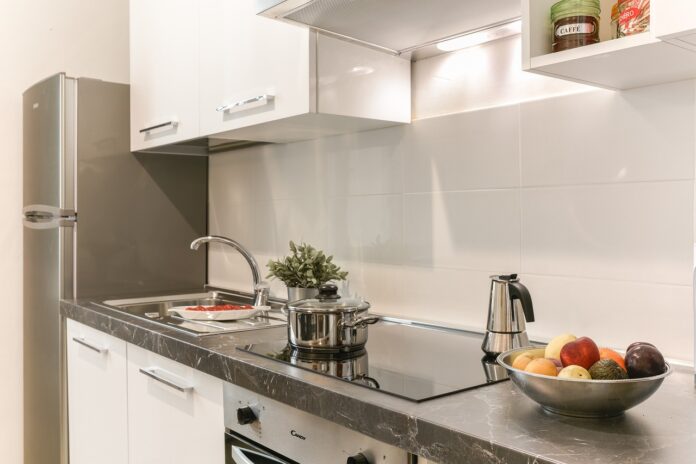A kitchen island can transform your cooking space, making it more functional and aesthetically appealing. But when you incorporate a kitchen island with a sink and dishwasher, you elevate convenience to a whole new level. This design not only maximizes space but also streamlines meal prep and clean up, making your kitchen more efficient. In this article, we’ll explore the benefits of adding these features, considerations for installation, and tips for creating a well-designed kitchen island.
Why Choose a Kitchen Island with a Sink and Dishwasher?
Having a kitchen island with a sink and dishwasher offers multiple benefits:
- Efficient Workflow: Combining a sink and dishwasher in the island brings your prep and clean up stations closer together, reducing the need to move around the kitchen.
- Extra Counter Space: While your sink and dishwasher handle the cleaning, you still have ample countertop space for chopping vegetables, preparing meals, or serving food.
- Modern Aesthetic: An island equipped with a sink and dishwasher gives your kitchen a sleek, modern look that adds value to your home.
- Improved Traffic Flow: By placing these essential components on the island, you free up space in other parts of the kitchen, making the room feel more open and accessible.
Key Considerations for Your Kitchen Island
Before installing a kitchen island with a sink and dishwasher, it’s important to consider a few critical factors:
1. Plumbing Requirements
Installing both a sink and dishwasher on your kitchen island requires plumbing connections. You’ll need to ensure there’s access to both water lines and drainage under the island. It’s advisable to consult a professional plumber to assess whether your kitchen can handle these requirements.
2. Electrical Setup
Dishwashers require electricity to operate, so you’ll need to have electrical outlets installed in your island. Make sure the placement of the outlets meets local codes and provides enough power for both the dishwasher and any additional appliances, like a garbage disposal unit.
3. Ventilation and Airflow
While sinks don’t require ventilation, the dishwasher may need proper airflow for cooling. Ensure your island design allows for the appropriate ventilation so your appliances run efficiently.
4. Countertop Space and Layout
Even with a sink and dishwasher, it’s important to leave enough countertop space for prep work. Ideally, the sink should be positioned in a way that keeps the surrounding area clear, allowing room for chopping, mixing, and assembling meals.
Choosing the Right Sink for Your Kitchen Island
The type of sink you choose for your kitchen island can greatly affect its functionality and style:
- Single vs. Double Basin: A single basin sink provides more space for washing large dishes and pans, while a double basin offers the flexibility to wash and rinse simultaneously.
- Undermount vs. Drop-In: Undermount sinks are sleek and modern, blending seamlessly with the countertop. Drop-in sinks are easier to install and tend to be more budget-friendly.
- Material: Stainless steel sinks are durable and easy to clean, while porcelain and composite granite offer a more luxurious look but require extra care.
Selecting the Best Dishwasher for Your Island
When choosing a dishwasher for your kitchen island, consider the following:
- Size: Dishwashers come in standard sizes (24 inches wide), but there are compact models available if you’re working with a smaller kitchen island.
- Efficiency: Look for dishwashers with high energy efficiency ratings to save on water and electricity. Models with adjustable racks and specialized settings can accommodate larger loads or delicate items.
- Noise Level: Since the island is often at the center of the kitchen and living space, choose a quiet model to avoid disruption during use.
Design Tips for a Functional and Stylish Kitchen Island
1. Maximize Storage
A well-designed kitchen island should include storage options like cabinets, drawers, or open shelving. This not only keeps your kitchen organized but also provides convenient access to cleaning supplies, cookware, and utensils.
2. Consider Seating
If your kitchen island doubles as a dining or gathering area, ensure there’s enough seating space around it. Allow about 24 inches of width per person to keep it comfortable.
3. Lighting
Adequate lighting is essential, especially over the sink and dishwasher. Pendant lights or recessed lighting can illuminate your workspace, while adding a decorative touch.
4. Waterproofing and Durability
Because a kitchen island with a sink and dishwasher will encounter water frequently, choose materials that are water-resistant and durable. Countertops like quartz or granite are excellent choices as they resist stains and moisture.
Cost Considerations
Installing a kitchen island with a sink and dishwasher comes with costs related to both the installation and the materials used. Here’s a breakdown of common expenses:
- Sink and Dishwasher: Depending on the quality and brand, expect to pay anywhere from $300 to $1,500 for each appliance.
- Plumbing and Electrical Work: Professional installation, including plumbing and electrical work, can range from $500 to $2,000, depending on the complexity of the job.
- Countertops and Cabinets: The price for custom countertops and cabinets varies based on material and design, typically ranging from $2,000 to $5,000 for the island.
While these costs can add up, the investment is often worth it for the added functionality, storage, and modern look that a kitchen island with a sink and dishwasher brings to your home.
Conclusion
A kitchen island with a sink and dishwasher is a practical and stylish addition to any kitchen. It streamlines the cleaning and prep process while offering extra storage and counter space. By carefully considering the plumbing, electrical needs, and design elements, you can create a highly functional kitchen that’s both efficient and beautiful.



